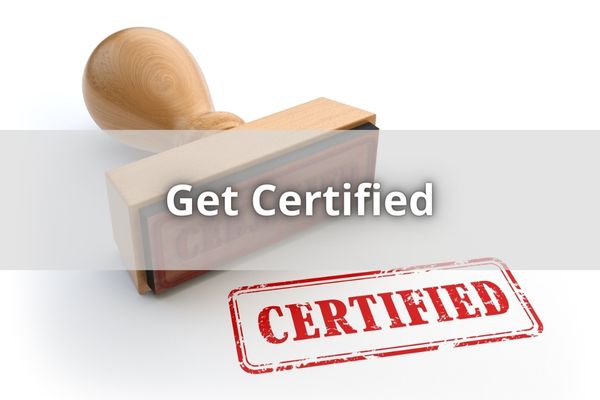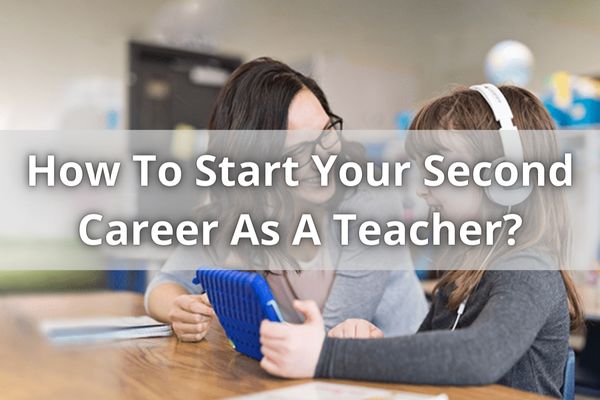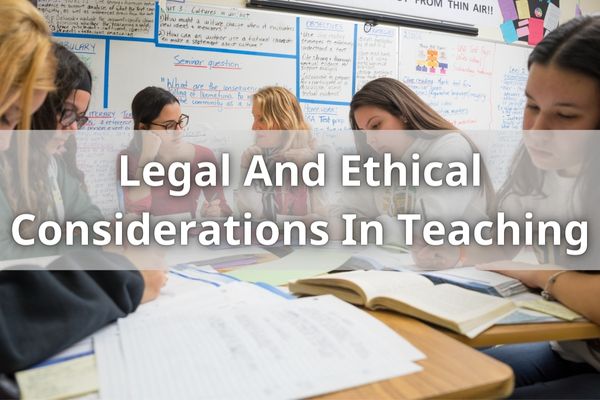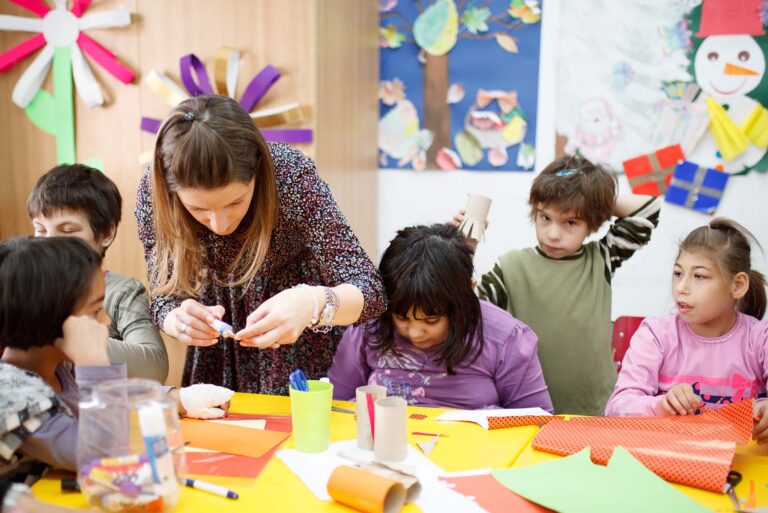Switching Careers To Become A Teacher: Let’s Make The Leap
Changing your career can be difficult, but for many people it is an essential step in finding satisfaction and fulfillment. Teaching is one of the most rewarding professions out there, and with the right attitude, skillset and determination you could make a great teacher too!
In this article we’ll explore what’s involved in switching careers to become a teacher and how it could benefit you personally and professionally. From gaining new qualifications to understanding the job market, there are plenty of things to consider when making such a big decision.
Assess Your Reasons For Switching Careers
I have decided to switch careers and become a teacher, but before I do this, it is important for me to examine my motivations. Why am I making this change? What drives me to want to teach?
It’s essential that I evaluate my qualifications as well – what makes me suitable for the job? Do I possess the necessary skills or will I need additional training?
Lastly, I must consider all of my alternatives. Teaching might be right for me, but are there any other career paths out there worth exploring? To make sure that I’m taking the right step forward in my life, these questions must be answered thoughtfully and honestly.
Considering why you’re changing your career path can provide valuable insight into how successful you’ll be in your new role. If teaching feels like an escape from something else, chances are good that it won’t bring as much fulfillment as if it were chosen because of a genuine passion for learning.
Likewise, having a clear understanding of one’s own strengths and weaknesses helps identify areas where further education may be needed prior to entering the classroom.
Weighing up all possible options is key when making such a major decision. Even though teaching might seem like the obvious choice at first glance, taking some time to explore other avenues could reveal more satisfying opportunities elsewhere. Making sure that the move away from one’s current profession is truly worthwhile requires careful consideration and reflection on factors such as long-term prospects and growth potential within each field being considered.
Do Your Research
Exploring career options is an important step when considering a switch to teaching. Researching the education landscape, local and state-specific requirements, as well as your own skills and experience will help you create a plan for achieving your goals:
- Explore Options – Gather information about educational opportunities in your area, such as teacher certification programs or alternative route programs. You should also explore job possibilities at various school districts and evaluate their qualifications.
- Create a Plan – After researching the available options, create a timeline that outlines your steps towards becoming a teacher. This could include earning additional certifications or completing courses necessary to meet required standards. Additionally, begin networking with professionals in the field to get more insight into the profession and learn from their experiences.
- Stay Motivated – Making any major life change can be overwhelming but staying motivated by setting realistic milestones along the way helps keep you on track. Ensure you have support from family members or close friends who understand what you are trying to accomplish and provide encouragement throughout the journey.
Making this big transition requires dedication and commitment, but it can be done if you take each step one at a time while keeping focused on your long term goal of teaching. With some careful planning and research, anyone willing to put in hard work can become certified and pursue their dream of working in education!
Get Certified

Obtaining the right credentials to become a teacher is essential and can be done in several ways. Depending on your current educational level, you may decide to pursue an undergraduate degree or complete a certification program tailored for individuals who have completed their education at a different career path.
It’s important to research all of these options carefully and make sure that they meet any state-specific requirements before making your final decision. Additionally, financial planning should also come into play when deciding which route to take; certifications will cost money so it’s important to factor this into your budgeting plan if applicable.
Professional development is another key component of switching careers and becoming a teacher. Look for programs and organizations that offer resources such as training sessions, workshops and seminars specifically targeted towards those looking to change careers. These experiences provide valuable insight into the teaching profession and give you the chance to network with other professionals in the field. They are excellent opportunities for self growth and help build confidence as well.
It’s never too late – taking the first steps toward obtaining certification as a teacher can open up many new possibilities for personal advancement as well as professional satisfaction! All that’s necessary is doing some research on available certification paths, developing a budget plan if needed, and exploring professional development offerings related to teaching. With determination, hard work, and careful planning anyone has the potential to switch careers successfully – good luck!
Gain Classroom Experience
Now that you have a plan for getting certified, it is time to start gaining classroom experience. Before diving into the teaching world, consider finding mentors who are already in the profession and can provide advice on how to make your transition into teaching as successful as possible. Mentors can also offer insight into exploring different options such as volunteering or substitute teaching opportunities. Additionally, they can assist with creating lesson plans and playing an integral role in developing students’ skills and knowledge.
Another way to gain valuable experience is through observations and shadowing experienced teachers in their classrooms. This will give you a firsthand look at how classes are conducted while providing useful tips on classroom management strategies.
Online tutoring or teaching positions are also available if you want to practice before jumping right into physical classrooms. Finally, internships or student-teaching opportunities may be worth considering depending on what type of certification requirements must be met in order to teach professionally within your state.
By taking advantage of one or multiple of these approaches, you can begin the journey towards becoming an educator by having real-world experiences that will help shape your career path even further down the road.
Update Your Resume
When switching careers to become a teacher, it’s important to update your resume in order to highlight relevant experience and skills. This means revising qualifications such as educational background and any teaching-related experiences you may have had or certifications that you hold.
You should also seek advice from experienced teachers who can help provide perspective on how best to present yourself professionally. Additionally, creating a portfolio of work samples is an effective way to showcase your passion for teaching. It helps give potential employers tangible evidence of the type of educator you are and provides insight into the kinds of strategies and tactics you use when engaging with students.
Overall, preparing for a career change requires additional effort beyond simply updating your resume. Taking steps like seeking advice from professionals in the field and putting together portfolios can go a long way towards demonstrating your commitment to becoming a successful teacher.
With this extra preparation in place, you will be well-equipped to pursue further opportunities within the profession.
Networking And Job Search Strategies
Making the transition to teaching can be a daunting task, but it is possible with the right resources and strategies. Updating your resume is an important part of presenting yourself as a competitive teacher candidate.
Now, let’s explore ways that you can use networking and job search strategies in order to find success when switching careers.
Networking is key when making this kind of career switch; creating connections within the education community will give you access to information about potential jobs and opportunities along with insights from experienced educators. Joining online communities or forums for teachers is a great way to start connecting and exploring options available to those interested in entering into the field.
Leveraging personal networks such as friends, family members, colleagues, former employers, etc., is also beneficial in terms of gaining referrals or advice on steps needed to become certified or qualified for certain positions.
Refining goals by researching specific school districts, curriculum requirements, student demographics (e.g., age range), etc., will help ensure that you are taking appropriate actions towards achieving your desired outcome – becoming a successful teacher! Additionally, creating an online presence showcasing your teaching skills can go a long way in demonstrating proficiency while captivating prospective employers’ attention during interviews or other activities related to obtaining employment as an educator.
Aspiring teachers should take time to familiarize themselves with different job search techniques and best practices associated with transitioning into this profession so they have all the necessary tools at their disposal in order to ensure success!
Consider Working Short-Term As An Assistant

One way to switch careers and become a teacher is to consider working short-term as an assistant.
Examining qualifications for such positions, exploring opportunities available in the field, and building relationships with teachers are critical steps when transitioning from another profession into teaching. As an assistant, you can gain hands-on experience in a classroom setting that will provide invaluable insight into the roles and responsibilities of a teacher.
Additionally, being able to develop relationships with teachers and administrators allows one to identify areas for improvement or professional development within school systems. Moreover, assistants have the opportunity to observe and learn different strategies used by experienced educators.
The best way to start planning your transition into teaching is to research local schools which offer assistant programs. You can also reach out directly to teachers who may be looking for help during their classes.
By taking initiative on these two fronts, potential candidates can begin gaining more knowledge about how they could contribute meaningfully in this role while expanding their network at the same time.
Go Forward With Confidence
Embracing the uncertainty that comes with making a career switch can be daunting, but with the right resources and planning, you can go forward with confidence. One way to do this is by utilizing educational resources such as Reading A-Z and Raz-Plus. These sites provide access to activities, books, lessons plans, and assessments to help you become familiar with curriculum standards and best practices in teaching.
Staying up to date on industry news helps you keep abreast of new trends, policies, and methods for effective instruction. Additionally, it’s important to continuously improve your teaching skills; take classes or workshops related to classroom management techniques or student engagement strategies.
Additionally, second career teachers may face unique challenges in their transition into the profession. Table 1 (below) outlines some common issues faced by those who are switching careers and provides tips on how they might overcome them:
| Challenges | Tips To Overcome |
| Limited Experience With Students | Observe experienced teachers & build relationships with mentors within the school system |
| Difficulty Connecting With Students Of Different Backgrounds | Respect & embrace diversity & create an inclusive learning environment where all students feel valued & respected |
| Unfamiliarity With Curriculum Standards & Best Practices In Teaching | Utilize online resources like Reading A-Z & Raz-plus for activities, books & lesson plans/assessments aligned w/curriculum standards/best practices in teaching |
Developing meaningful relationships with students is essential for successful transitions when changing professions. It’s important to motivate students through positive reinforcement and praise while also providing clear expectations about behavior and setting limits. This will help foster an open dialogue between teacher and student which facilitates growth on both sides. As long as you have taken steps towards preparing yourself academically and emotionally for the journey ahead of you then there should be no reason why you cannot confidently move forward into becoming a teacher.
How To Start Your Second Career As A Teacher?

Exploring options and alternative methods for transitioning into a teaching career is an important part of the process. To start, take some time to visit classrooms or observe lessons at different levels in order to get a better understanding of what kind of teacher you would like to be.
Additionally, connecting with current teachers will provide insight into how they balance their workloads and succeed in their roles. It’s also helpful to ask yourself questions regarding your motivations and goals so that you can make sure this new career path is right for you.
Once you have made up your mind about becoming a teacher, it’s time to research education options available to career changers and investigate financial aid opportunities that are out there. This could include speaking with admissions advisors from colleges or universities near you who offer teaching programs as well as looking into scholarship possibilities or other grants specifically designed for those switching careers.
In addition, don’t forget about online learning platforms where you can find courses on various topics related to teaching such as lesson planning, curriculum development, classroom management, assessment strategies and more! Taking advantage of these resources gives aspiring teachers the chance to build valuable knowledge while they pursue formal qualifications in their desired field.
- Explore all potential education paths before committing
- Take the opportunity to connect with current teachers
- Investigate relevant financial aid options
- Look into online learning platforms
- Ask yourself questions regarding motivation
- Consider the available time commitment and dedication required
Make A Difference In The Classroom
Making a difference in the classroom starts with developing a student-centered approach.
By fostering relationships and building an environment of collaboration, teachers are able to better understand their students’ needs and create meaningful learning opportunities.
It also involves engaging parents and the community outside of school walls; by actively involving them in educational activities, teachers can extend their reach beyond the classroom.
Finally, harnessing technology is essential for making sure students are engaged during lessons while staying connected with those who may not be able to attend class or participate in person.
Through digital tools like video conferencing, teachers can bridge physical distance and continue providing quality instruction as if everyone were present together.
To make a real impact on student learning experiences, teachers must strive to provide equal access to all members of their classrooms through innovative methods that go beyond traditional approaches.
Become A Student

Becoming a student again is an essential part of switching careers to become a teacher.
One should foster connections with other students and educators, embrace the challenges that come with learning new concepts, and refine their skills as they progress through their studies. By fostering connections, one can learn from peers in similar courses or even those taking different ones. This allows for further understanding of the material being studied and forming friendships which could be beneficial when needing assistance or advice later on.
Additionally, by embracing the challenges posed by coursework and assignments, one will gain valuable experience that can only be acquired through challenging themselves.
Lastly, refining current skills while also developing new ones is key to becoming successful in any career path.
In order to have success in this endeavor it’s important to make sure you are surrounded by helpful resources such as mentors who understand your goals and provide guidance along the way.
With effort comes rewards; so always remain motivated and dedicated towards achieving your objectives!
Balancing Work-Life Demands
Switching to a career in teaching is no easy feat and requires balancing the demands of work-life. Managing stress, time management, and classroom dynamics are all essential skills for success. With proper planning and dedication, it can be done – but it’s important to set aside time for yourself too!
Time management strategies such as setting boundaries, creating lists, scheduling breaks, and asking for help are key when transitioning careers.
Setting boundaries with your colleagues and students helps ensure that you don’t become overwhelmed or overworked. Building a support network of experienced teachers who can offer advice on classroom dynamics will also prove invaluable during this transition period.
Finally, self-care should not be overlooked. Adapting to the teacher’s schedule including holidays and summer breaks may take some getting used to; so taking time out from busy schedules to relax makes perfect sense!
Furthermore, making sure you get enough sleep is absolutely vital if you plan to have the energy needed to keep up with classes full of energetic students!
Launch A Career Of Impact

Stepping into the classroom with a mission to make an impact can be both exhilarating and daunting. The responsibility of cultivating empathy, creating relationships, and inspiring motivation in students is not one that should be taken lightly. But by embracing this challenge head-on, teachers have the opportunity to make a lasting difference in their communities.
The most successful teachers do more than impart knowledge—they form meaningful ties with those they teach. Through these connections, teachers are able to help guide young minds on paths towards academic success while also providing support and encouragement to each student as an individual. Developing trust between teacher and pupil is essential for fostering a healthy learning environment where creative risk-taking is encouraged and mistakes are seen as opportunities for growth.
By committing to a teaching career, you will join countless educators who work tirelessly every day in pursuit of better outcomes for their students’ futures. This passion for education has the potential to effect positive change at all levels of society; from individuals up through entire communities, everyone stands to benefit from having dedicated professionals within our school systems.
In turn, investing your time in service of others promises its own rewards: joys found only in witnessing moments of transformation and progress among those you teach.
Adapting Your Teaching Style To Different Learning Environments
Being able to modify your teaching approach to fit various learning contexts is crucial for teachers. There are some tactics that may assist establish a successful and engaging learning environment no matter what sort of scenario you find yourself in, whether you are in the classroom or communicating remotely with students.
By leveraging technology and assessing readiness among students, teachers can ensure their lessons reach every learner in any situation.
Students gain a lot from face-to-face interaction with peers and teachers in traditional classroom environments. In current days of social distance, this is not always practical, but technology, such as video conferencing platforms, has created new chances for instructors to communicate personally with their students while still giving them the same information they would get in person. This means being creative when planning lessons and activities so that all learners can remain engaged even though they may not be physically present.
When working with inclusive and special education classrooms, teachers should make sure to assess the needs of each student before beginning instruction. It is also important for teachers to focus on individualized learning plans tailored specifically for each student’s unique abilities and strengths. Connecting virtually will provide extra support for those who need additional assistance outside of the classroom.
With proper assessment techniques, teachers can make sure their teachings are accessible for everyone involved regardless of the medium used for instruction.
By understanding how different learning styles work best in different scenarios, teachers can effectively adjust their teaching methods accordingly to suit whatever situation arises – whether its online or offline, at home or school, etc.. Teaching becomes more than just conveying information but instead involves creating meaningful connections between learners despite potential barriers posed by distance or other challenges.
Legal And Ethical Considerations In Teaching

As a teacher, it is essential to understand the legal and ethical considerations that come with this profession. These responsibilities are not only important for protecting oneself as an educator, but also ensure the safety of students in all aspects – physical, emotional, and intellectual. From managing expectations to upholding ethical boundaries, here’s what one needs to be aware of when switching careers into teaching.
First up: Protecting student privacy and confidentiality. It is crucial that teachers maintain their students’ trust by not sharing any academic or personal information unless required by law or district policy. Furthermore, educators must abide by mandatory reporting requirements related to abuse or neglect, while adhering to guidelines regarding data collection and storage.
Next: Intellectual property rights and educational materials. As such, teachers have a responsibility to respect copyrights for original works created by others – including digital media content from websites like YouTube and Vimeo. Additionally, they should obtain permission before using photos of children without parental consent or credit authorship whenever citing sources within assignments or lectures.
Lastly (but most importantly): Professional boundaries and conduct. This includes setting clear expectations around social media interactions between staff members and students at school as well as outside of school hours – even if volunteering opportunities arise! Moreover, cultivating relationships based on mutual trust can help create an emotionally safe environment where students feel comfortable expressing themselves freely without fear of judgement or ridicule.
Ethical Boundaries:
- Respect student privacy & confidentiality
- Avoid disclosing confidential info unless required by law/district policy
- Adhere to mandatory reporting requirements related to abuse/neglect
Managing Expectations:
- Obtain permission before using child photos without parental consent
- Credit authorship when citing resources within assignments/lectures
- Set clear expectations for social media interaction w/staff & students
Emotional Safety:
- Cultivate relationships based on mutual trust
- Create an emotionally safe environment free from judgement
Conclusion
Switching careers to become a teacher is definitely an achievable goal. It requires dedication and hard work, but it can be done. With the right qualifications and experience, you’ll find that teaching offers many benefits, both financial and emotional.
It’s not always easy, but if you’re passionate about helping others learn, then becoming a teacher might just be the perfect career switch for you. So don’t give up on your dream of changing careers – with enough determination and effort, you can make it happen!







